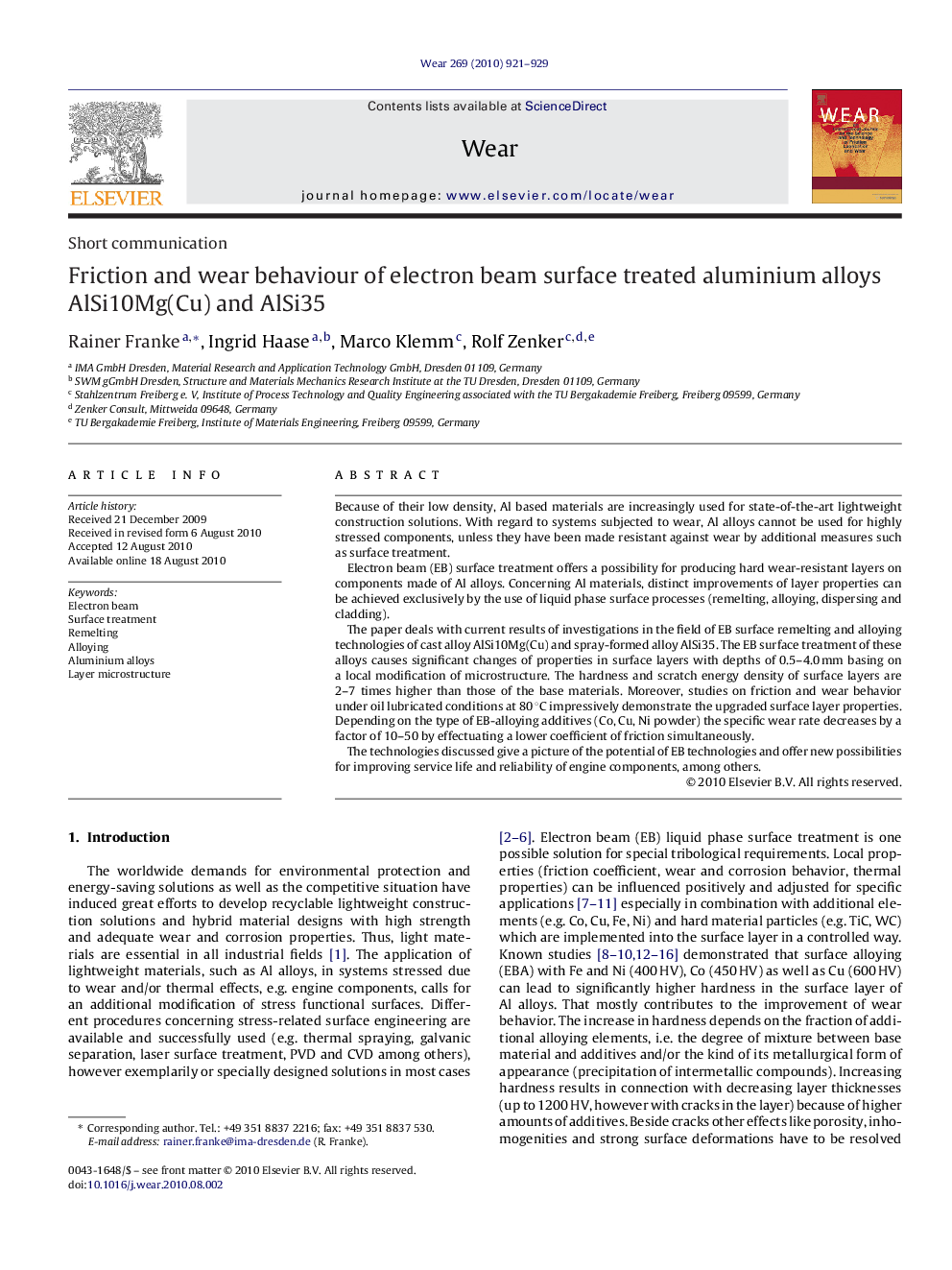| Article ID | Journal | Published Year | Pages | File Type |
|---|---|---|---|---|
| 618508 | Wear | 2010 | 9 Pages |
Because of their low density, Al based materials are increasingly used for state-of-the-art lightweight construction solutions. With regard to systems subjected to wear, Al alloys cannot be used for highly stressed components, unless they have been made resistant against wear by additional measures such as surface treatment.Electron beam (EB) surface treatment offers a possibility for producing hard wear-resistant layers on components made of Al alloys. Concerning Al materials, distinct improvements of layer properties can be achieved exclusively by the use of liquid phase surface processes (remelting, alloying, dispersing and cladding).The paper deals with current results of investigations in the field of EB surface remelting and alloying technologies of cast alloy AlSi10Mg(Cu) and spray-formed alloy AlSi35. The EB surface treatment of these alloys causes significant changes of properties in surface layers with depths of 0.5–4.0 mm basing on a local modification of microstructure. The hardness and scratch energy density of surface layers are 2–7 times higher than those of the base materials. Moreover, studies on friction and wear behavior under oil lubricated conditions at 80 °C impressively demonstrate the upgraded surface layer properties. Depending on the type of EB-alloying additives (Co, Cu, Ni powder) the specific wear rate decreases by a factor of 10–50 by effectuating a lower coefficient of friction simultaneously.The technologies discussed give a picture of the potential of EB technologies and offer new possibilities for improving service life and reliability of engine components, among others.
Research highlights▶ The paper deals with current results of investigations in the field of EB surface remelting and alloying technologies of cast alloy AlSi10Mg(Cu) and spray-formed alloy AlSi35. ▶ The EB surface treatment of these alloys causes significant changes of properties in surface layers with depths of 0.5–4.0 mm basing on a local modification of microstructure. ▶ The hardness and scratch energy density of surface layers are 2–7 times higher than those of the base materials. ▶ Moreover, studies on friction and wear behavior under oil lubricated conditions at 80 °C impressively demonstrate the upgraded surface layer properties. ▶ Depending on the type of EB alloying additives (Co, Cu, Ni powder) the specific wear rate decreases by a factor of 10–50 by effectuating a lower coefficient of friction simultaneously. ▶ The technologies discussed give a picture of the potential of EB technologies and offer new possibilities for improving service life and reliability of engine components, among others.
